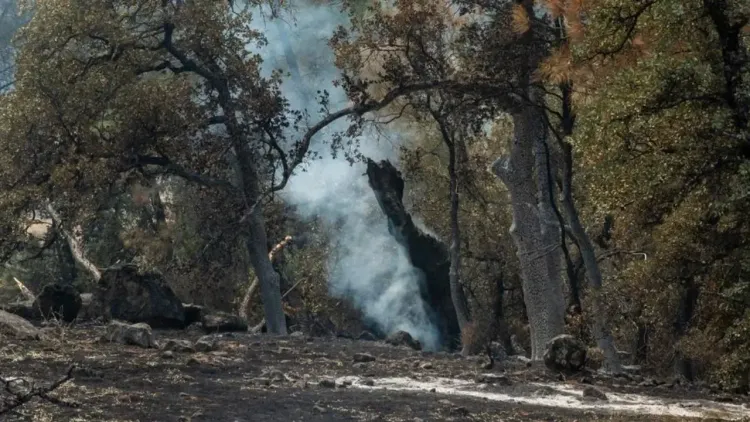2025 Climate Predictions Indicate Increased Wildfire Risks During Dry Winter in the United States

New York, Dec 28 (NationPress) Wildfires could be a significant issue this winter across the southern region of the United States as drought conditions linger and spread.
"Fire is likely the greatest threat heading into winter," stated climatologist and drought specialist Brian Fuchs.
Long-anticipated La Niña conditions are expected to emerge, potentially as soon as January. This phenomenon usually results in a more northerly storm path during the winter months, leaving the southern parts of the country experiencing warmer and drier conditions, according to the National Oceanic and Atmospheric Administration (NOAA). Consequently, forecasters predict that drought conditions will continue and intensify across the southern United States, as reported by the Xinhua news agency citing USA TODAY on Friday.
"Key areas to monitor will undoubtedly be the Southwest, Southeast, and the extent to which the southern Plains revert back into drought over the coming months," mentioned Fuchs from the National Drought Mitigation Centre.
Currently, 38.9 percent of the contiguous United States is under drought conditions, a decrease of about 13 percent since early November, according to the latest US Drought Monitor.
Looking ahead, aside from the wildfire risk, drought impacts are generally less severe during winter, though some long-term hydrological issues persist, such as below-normal soil moisture and streamflow, especially in parts of Ohio, Michigan, Indiana, and Illinois, as stated in a report on Drought.gov.
"Dry wells and low springs remain problematic in southeast Ohio, and low farm ponds are an issue in northwest Ohio," the report added.
"The broader picture indicates that the expected La Niña winter will contribute to increased dryness in the southern regions of the US, with the potential for new drought development likely (until the end of March 2025) spanning from Arizona to central and northeast Texas, along the Gulf Coast, and into the Southeast (including Florida)," Fuchs remarked.
He noted that many precipitation statistics were 'skewed' in the Southeast and Florida due to the impact of tropical storms and hurricanes earlier in the fall, but the dryness has been accumulating since then. "I anticipate that drought conditions will persist through winter and into early spring."









